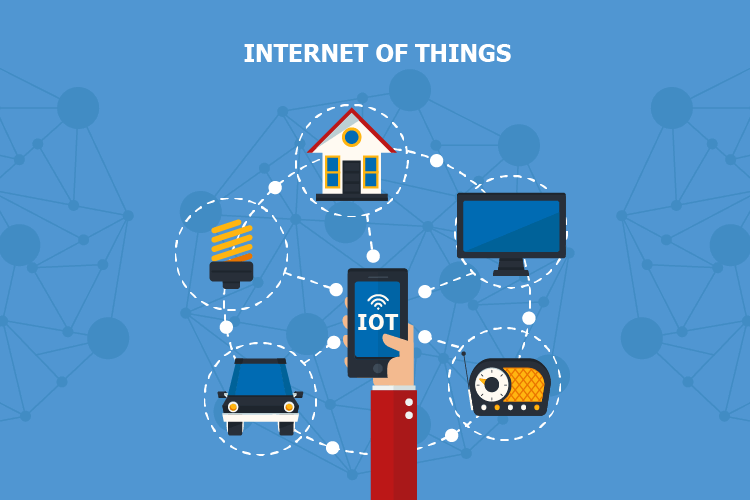The internet of things is a network of “smart” devices that communicate seamlessly over the internet. It’s essentially sensors and actuators that are connected by digital networks to to computer systems. As classic broadband internet becomes more widely available, the costs to connect to it decreases, and more devices are being created with wifi capabilities built in, it creates a sort of perfect storm for mass connectivity. That is, the essence of the internet of things or the IoT. Some experts argue that the IoT is overhyped, but to others they believe it could have a significant, revolutionary impact across society. Let’s check it out.
Consumer IoT
To begin, 127 new devices connect to the internet every second. This could include smart home systems, smart phones, watches or cars to name a few. At the basic level, your phone being connected to the internet is a part of the internet of things. Next, think of the ability to control your appliances, thermostats, turn on and off the lights in your house from your phone, thus creating a “network of things, connected by the internet. An interesting part of the IoT is its ability to also work backwards. For example, a self driving car stopping when sensing another stopped car in front of it, or a smartphone notifies the user when a security sensor goes off at their house. Perhaps the best example to illustrate the IoT are smart home devices such as Amazon’s Alexa, which allows the owner to connect with a wide range of services like making online orders and purchases, informing them about the weather, playing music or creating lists. These are all IoT uses that are available to consumers today, and shows how at a basic level, the internet of things can play a part in our day to day life.
Industrial IoT
Across industries, the internet of things is also beginning to be used, although It is not as prevalent (yet) within industries for a few reasons:
- Most systems rely on sensors within it that collect and relay a a massive amount of data. The sheer amount of data is often too much for an analytics department or a modern computer to even handle. An oil rig that has 30,000 sensors will only have 1% of it’s data analyzed.
- Humans like humans. We prefer to consult another being with experience, or expertise in the area instead of looking through millions of pieces of data. Despite the data being much more complete and objective, for some reason we value it less.
With that being said the applications for industrial IoT is quite large in scope and ranges across just about every sector. One of the main drivers will be predictive maintenance alerts throughout the manufacturing, automotive, construction and mining industries. Again, sensors will let supervisors or management know when certain and specific parts need to be changed or maintained.
Sensors within the agricultural sector are already making a difference. Smart Farms that use sensors and IoT technology to monitor specific data related to farming and growing. Sensors can monitor field data such as chemical components in soil, humidity levels, moisture and temperature all in real time. The same can go for cattle or livestock and monitoring to collect data regarding the location, well-being and health of the animal. The same can go for the food stock and quality available. This will enable farmers to be much more efficient, minimize risk and actually become more transparent for the consumer. Agriculture is just one industry that can completely revolutionized by the Internet of Things. With a growing worldwide population, it’s extremely important that we farm as efficiently and effectively as possible.
City Applications
There’s been a lot of talk about smart cities in the past few years. Communities, cities and governments are embracing the idea that there’s a more efficient way to manage cities. Using IoT, we will theoretically be able to solve many problems that our cities currently face. Cars communicating with traffic lights to find the quickest route for everyone, more efficient public transportation, increased security, monitoring of city waste and pollution and features like quick flood control. Again, this is just scraping the surface of the possibilities that IoT provides for the world around us.
Healthcare
To realize the full potential of IoT applications, technology will need to continue to evolve, and reach a level of lower cost and more robust analytics. In almost all areas, IoT raises serious questions about data security and privacy. And leaders must embrace data driven decision making and rely on data instead of emotions. No one knows for sure how soon or what the full impact of integrating IoT systems will be, but we know it is on it’s way in some shape or form.

